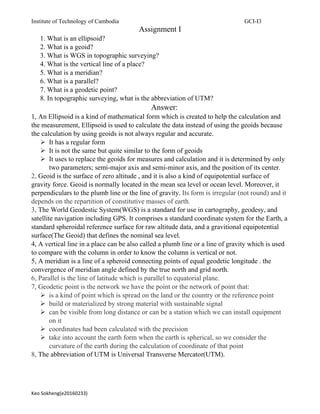The document contains definitions and explanations of various terms used in topographic surveying:
- An ellipsoid is a mathematical form used to approximate the geoid for calculation and measurement purposes.
- A geoid is an irregular equipotential surface that approximates mean sea level.
- WGS refers to the World Geodetic System, which defines a standard coordinate system and reference surface for the Earth.
- Other terms defined include meridian, parallel, geodetic point, plumb line, and UTM (Universal Transverse Mercator) coordinate system.

































